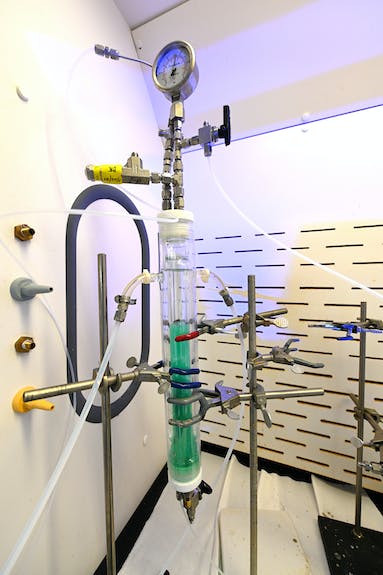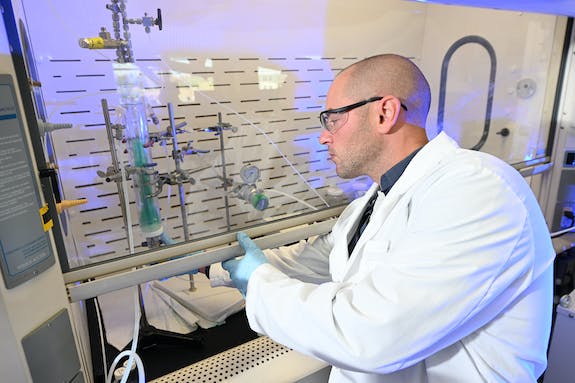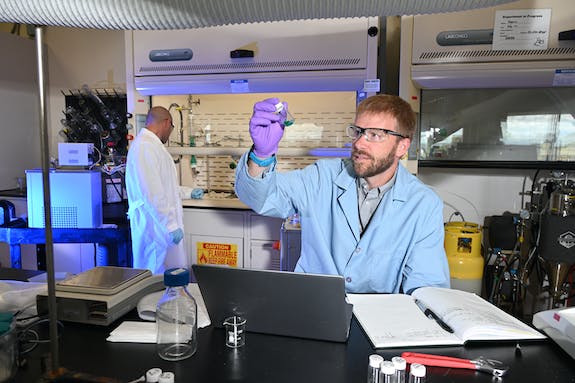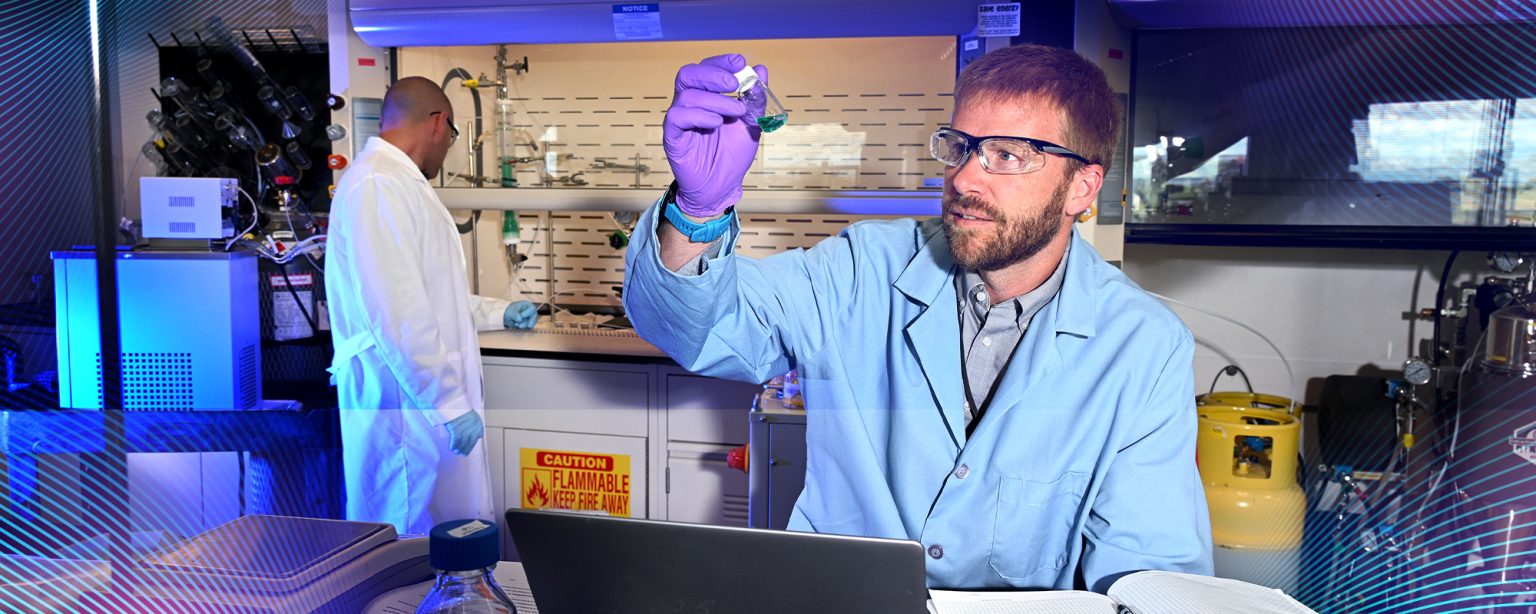Update: This technology has recently won an R&D 100 Award, under the name EASE – Ether-based Aqueous Separations and Extractions.
It’s not uncommon in the scientific world for a process to have many unique applications. For example, Idaho National Laboratory researchers have taken a water treatment technology and adapted it for another environmentally important function – selectively separating rare earth elements and transition metals. This chemical process, recently described in a Nature Communications article, significantly reduces both the energy and product consumption involved with rare earth element recovery.

Rare earth metals are a collection of chemically similar metallic elements that tend to occur at low concentrations in nature and can be difficult to separate from one another. They are valuable for their use in electric car motors, computer hard drives, and wind turbines. Transition metals are a class of metals that are excellent conductors of heat and electricity, often with high melting points and unique structural properties, making them essential for producing common alloys like steel and copper, as well as lithium-ion battery cathodes.
Currently, most of the components carrying these metals are simply disposed of. INL’s new method to extract these valuable metals involves dimethyl ether, a gaseous compound that served as one of the first commercial refrigerants. It drives fractional crystallization — a process that divides chemical substances based on their solubility — to separate rare earth elements and transition metals from magnet wastes.
“This process begins with a magnet that’s no longer useful, which is cut and ground into shavings,” said Caleb Stetson, the experimental lead for the project. “The magnet shavings are then put it into a solution with lixiviants, a liquid used to selectively extract metals from the material. Once the desired metals are leached from the material into the liquid, we can then apply a treatment process.”
The dimethyl ether-driven process uses far less energy and pressure than traditional methods, typically conducted at hundreds of degrees Celsius. Fractional crystallization can be carried out at ambient temperatures and requires only slightly elevated pressures of around five atmospheres. In comparison, the pressure in an unopened 12-ounce can of soda is 3.5 atmospheres. The lower energy and pressure needs also save money.

Competing technologies also use added chemical “reagents” to drive precipitation and other separations, which inevitably become additional waste products with financial and environmental consequences. This is not the case with dimethyl ether-based fractional crystallization.
Aaron Wilson, the project’s principal investigator, selected dimethyl ether for its ease of recovery, overcoming a shortcoming of prior attempts to use solvents to drive critical material separations. By dropping the pressure then recompressing the gas at the end of the experiment, the team can recover the solvent and reuse it in future cycles.
The process has other advantages as well. “It can be difficult to adjust temperatures for evaporative crystallization, but this fractional crystallization process eliminates all those challenges,” Stetson said. “For the process to separate distinct fractions from a metal-bearing solution, we only need to adjust the temperature by 10 degrees.”

When developing this solvent-based process for zero-waste metal recovery, the team worked closely with some of the electrochemical rare earth metal recovery processes already in place at INL. This includes the E-RECOV effort, which uses an electrochemical cell to efficiently recover metals from discarded electronics. Such work is funded by the Department of Energy’s Critical Materials Institute. Reducing the energy intensity and waste profile of critical material recovery also has significant environmental justice implications. In the past decades, primary extraction, like mining and enhancing the economic value of the product through strategic ore extraction, mining and beneficiation) has been shifted to underdeveloped nations like Congo, while energy-intensive downstream processing has been offshored to Asia. Much of this offshoring has been driven by public aversion to “dirty” mineral extraction processes taking place in their backyard. Creating a cleaner method will facilitate critical materials recovery domestically and abroad without exposing underserved communities to hazardous conditions.
Additionally, Wilson and his research team are working to address wastes associated with synthetic gypsum production via a project for the National Alliance for Water Innovation. Synthetic gypsum, the source of nearly 30% of dry wall in the U.S., is produced when scrubbing sulfur oxides from flue gas to prevent acid rain. Their team is isolating the wastes from the manufacturing process using dimethyl ether. This treatment has the potential to create even more products from what was originally merely an environmental problem.

The rare earth element and transition metal recovery work “would not have been possible without INL’s collaboration within the Critical Materials Institute at Ames National Laboratory,” Stetson said. “This has allowed us access to real-world materials and to conduct comprehensive research at the lab scale.”





